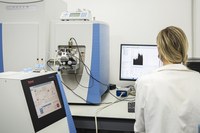Role of FAM134 paralogues in endoplasmic reticulum remodeling, ER-phagy, and Collagen quality control
Authors: Alessio Reggio, Viviana Buonomo, Rayene Berkane, Ramachandra M Bhaskara, Mariana Tellechea, Ivana Peluso, Elena Polishchuk, Giorgia Di Lorenzo, Carmine Cirillo, Marianna Esposito, Adeela Hussain, Antje K Huebner, Christian A Hübner, Carmine Settembre, Gerhard Hummer, Paolo Grumati, Alexandra Stolz
Year: 2021
Sources: EMBO Reports
Abstract:
Degradation of the endoplasmic reticulum (ER) via selective autophagy (ER-phagy) is vital for cellular homeostasis. We identify FAM134A/RETREG2 and FAM134C/RETREG3 as ER-phagy receptors, which predominantly exist in an inactive state under basal conditions. Upon autophagy induction and ER stress signal, they can induce significant ER fragmentation and subsequent lysosomal degradation. FAM134A, FAM134B/RETREG1, and FAM134C are essential for maintaining ER morphology in a LC3-interacting region (LIR)-dependent manner. Overexpression of any FAM134 paralogue has the capacity to significantly augment the general ER-phagy flux upon starvation or ER-stress. Global proteomic analysis of FAM134 overexpressing and knockout cell lines reveals several protein clusters that are distinctly regulated by each of the FAM134 paralogues as well as a cluster of commonly regulated ER-resident proteins. Utilizing pro-Collagen I, as a shared ER-phagy substrate, we observe that FAM134A acts in a LIR-independent manner and compensates for the loss of FAM134B and FAM134C, respectively. FAM134C instead is unable to compensate for the loss of its paralogues. Taken together, our data show that FAM134 paralogues contribute to common and unique ER-phagy pathways.
Category: journals

